A casual ramble on the estates of the Kabini River Lodge is always productive, for a variety of organisms, both large and small, call it home. On one such occasion, I chanced upon what looked like an interesting pattern on a tree trunk, that seemed to change even as I fixed my gaze on it. On approaching closer, it became obvious that it was a gathering of some curious looking insects. They moved as a group, albeit slowly. They had almost-transparent wings with black markings borne on a body that was a deep pink tending towards orange. What also caught my attention were their long hair-like antennae. It was this assemblage that formed the lovely pattern!
I moved in cautiously with my camera so as to not disturb them. Interestingly, they seemed hesitant to fly in spite of my approach. At best they all shuffled about a bit, but as a group, akin to a herd of sheep. This gave me ample opportunity to make some images before I continued on my walk.
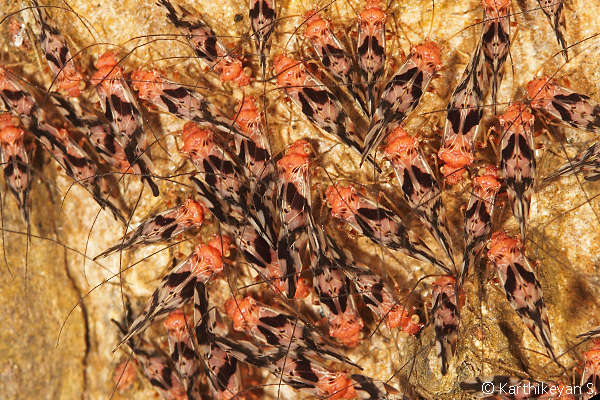
These insects were one of the many things that were seen during the time spent walking about. I made a mental note to find out more about these curious creatures. As happens to many of us, even to those endowed with good memory, such noting often tends to fade quickly. Thankfully, this time, it also came back soon.
A couple of months later, I was in the north-eastern part of the country looking for butterflies with three other like-minded folks. Tired of chasing butterflies during most part of the morning, we rested on the rocks that adorned the banks of a river. While casually discussing the butterflies that we had seen, one of us spotted a few insects moving among the rocks. I peered through my camera and saw a familiar form but of a bright orange colour, with transparent wings which had a few black lines. This also behaved in a similar fashion to the insects from Kabini.
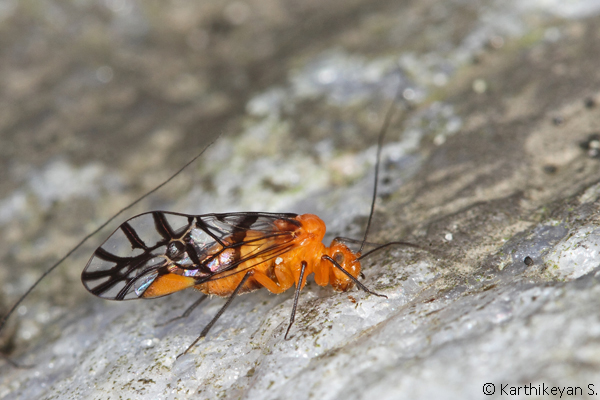
Along with identifying some of the butterflies photographed, I also set about trying to identify these little insects. I came to learn that these were the Bark Lice, also confirmed by L.Shyamal.
Bark Lice belong to the order Psocoptera. Long thread-like antennae and a particularly prominent head are characters that can be used to identify bark lice and other members of this order. The manner in which they hold their wings over their back is also a useful clue. One should also keep in mind that many of the 5000 or so species of bark lice do not possess wings.
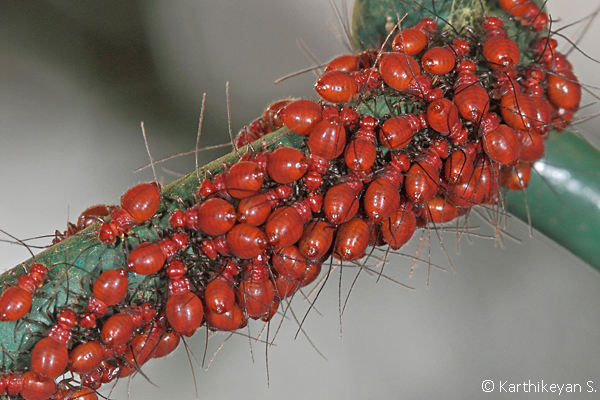
Most species of bark lice measure under a centimetre. These are primitive relatives of bugs and like them, undergo an incomplete metamorphosis wherein the nymphs resemble the adult sans wings.
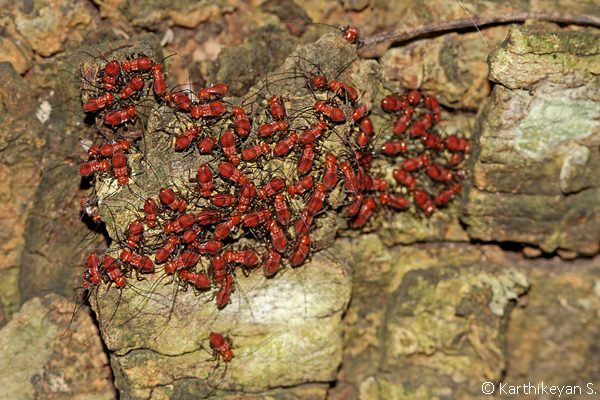
As noted earlier, they are typically seen on tree trunks or beneath stones and leaf litter. Some are gregarious as can be seen in these pictures. Wherever they may be, they thrive on lichen, fungi and algae. Bark lice are also known to spin a silken web on tree trunks. So much so that the entire trunk can be covered in a sheet of their silk. They live beneath this sheath where they go about feeding. The lice do not harm the tree in any manner. On the contrary, their eating habits could be beneficial for the tree.
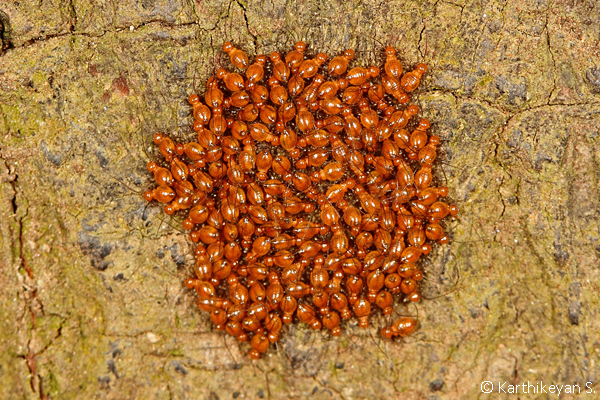
If you chance upon a tree draped with a gossamer of white, there is a good chance that there are bark lice lurking under that silken veil. If you are someone who spends time in the wilderness, watch out for a swarm on the tree – you might just be witnessing bark lice moving about doing their daily drill!